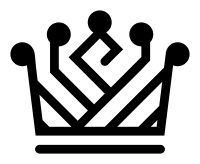Your cart is currently empty!
A Fashion Journey Close to the Amazon
When one thinks of the Andes, images of majestic mountains, ancient civilizations, and vibrant cultures come to mind. But there’s an aspect of Andean life that often goes unnoticed yet holds significant cultural importance – the hats. In this article, we delve into the fascinating world of Andean headwear, exploring how these unique pieces are not just a fashion statement, but a rich tapestry of history and identity, with the mighty Amazon not too far away.

- The Chullo: The chullo is perhaps the most iconic Andean hat, easily recognized by its earflaps and intricate patterns. Made from alpaca or sheep’s wool, these hats are a necessity in the harsh Andean climate, keeping locals warm during chilly days. Despite the close proximity to the warm Amazon basin, the Andean highlands can be surprisingly cold, making the chullo an essential piece of attire.
- The Montero: This hat is a stunning example of the blend between functionality and art. Traditionally worn by Andean women, the montero is a round, brimless hat that sits high on the head. It is often elaborately embroidered, showcasing the wearer’s skill and style. Even though the Amazon is known for its humid and hot climate, the montero stands as a testament to the diverse weather conditions experienced in this region, providing warmth and fashion in equal measure.
- The Sombrero de Paja Toquilla: Also known as the Panama hat, this hat has its roots in the Andes, despite its misleading name. Woven from the straw of the toquilla palm, this lightweight hat is perfect for the warmer areas of the Andes, offering protection from the sun without the added heat. Its proximity to the Amazon has influenced its design, making it an ideal choice for those venturing into the warmer, tropical areas.
- The Bombin: The bombin, or bowler hat, has a unique story in the Andes. Originally from Europe, this hat found its way to Bolivia in the early 20th century and quickly became a staple in the local fashion. Women in particular took to this style, and today it is a key part of the traditional Cholita dress. The bombin serves as a reminder of the Andes’ ability to blend external influences with local traditions, creating something entirely new yet deeply rooted in Andean culture.
- The K’eperina: While not a hat, the k’eperina is an important headpiece in the Andes, particularly for women. This rectangular piece of cloth is expertly folded and worn on the back, serving as both a headscarf and a carrier for goods or children. It reflects the Andean way of life, where practicality meets tradition, and the influence of the nearby Amazon is evident in its colorful, vibrant designs.
The hats of the Andes are more than just accessories; they are storytellers, weaving tales of history, culture, and identity. From the chullo to the k’eperina, each piece holds a unique place in Andean society, reflecting the region’s ability to balance the demands of its climate with the richness of its traditions. And with the Amazon just a stone’s throw away, these hats also embody the interconnectedness of the diverse landscapes and cultures that make this part of the world truly captivating.

Leave a Reply